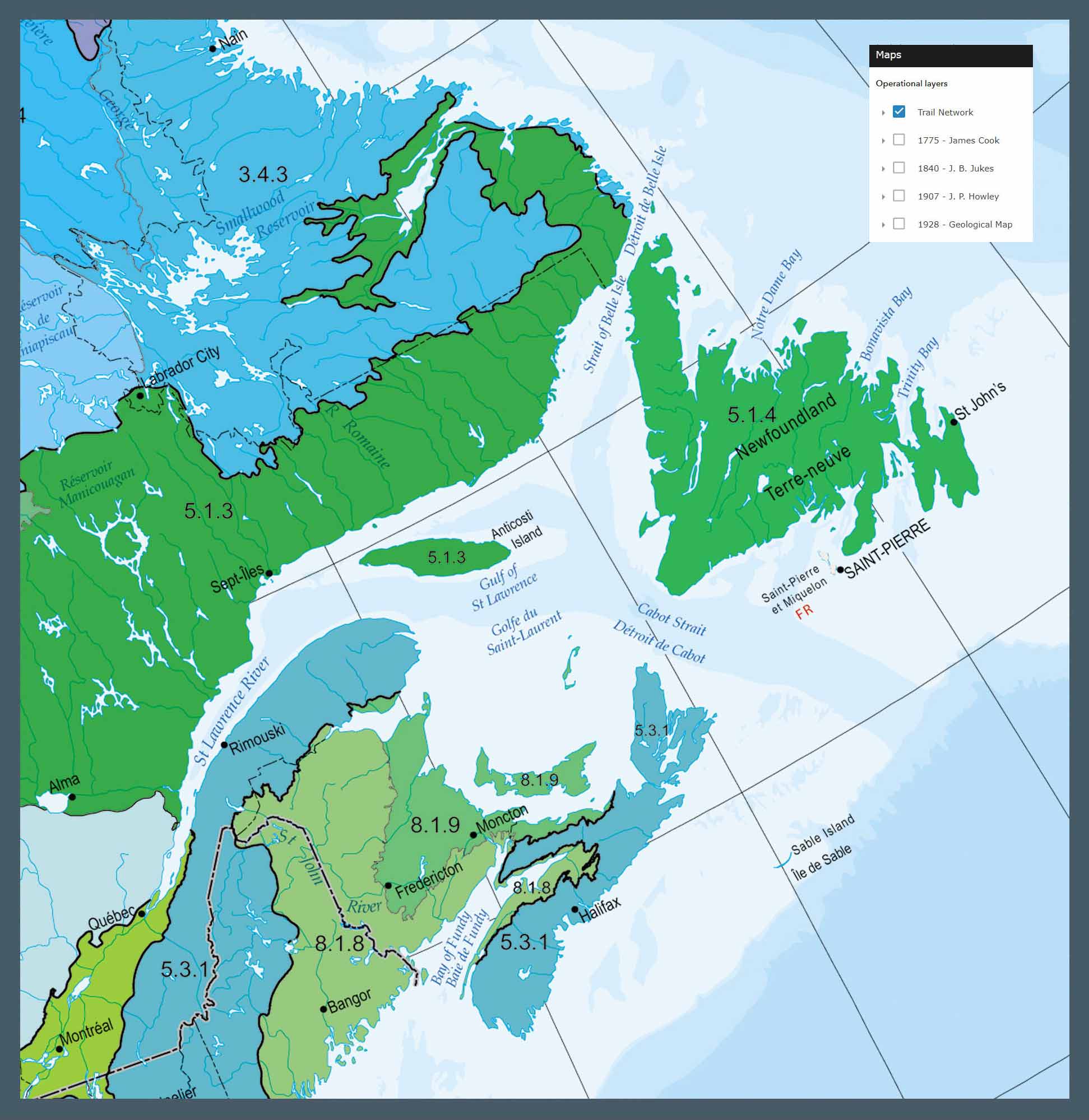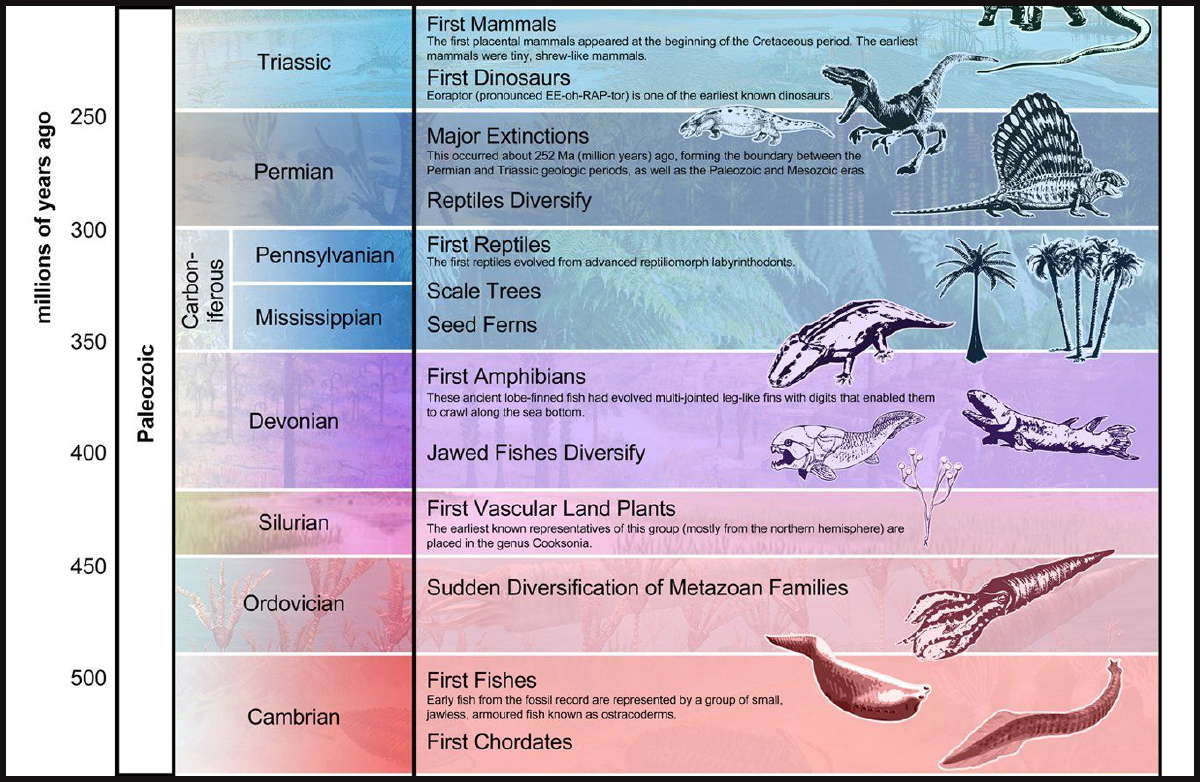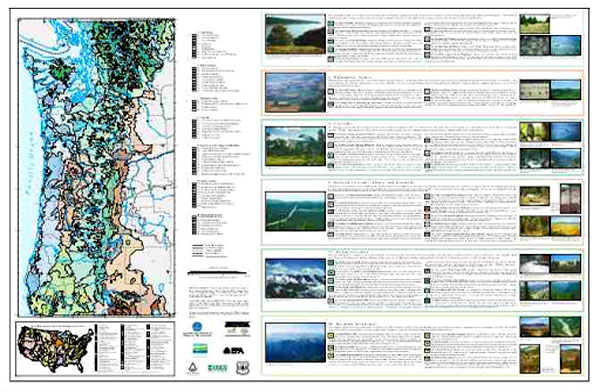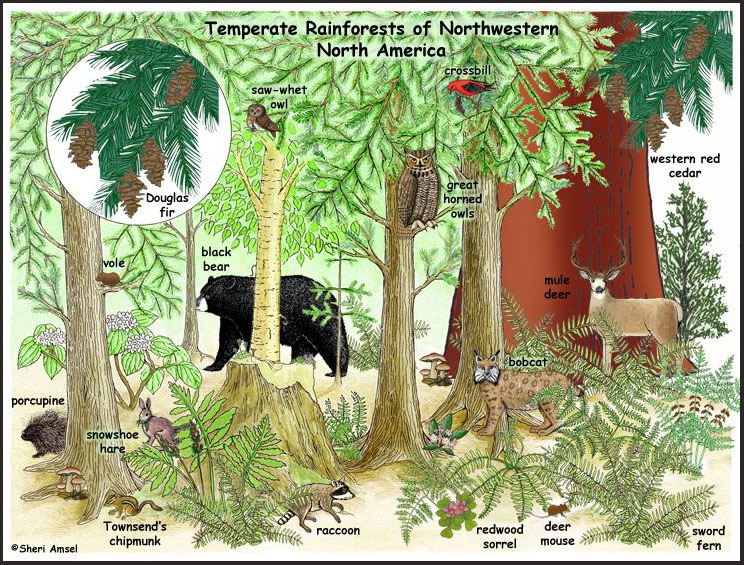The Appalachian-Caledonian Corridor (ACC) represents a vital ecological corridor stretching across the eastern United States and Canada to Greenland, Ireland, the UK and Norway, linking North America’s Appalachian Mountains to Europe’s Caledonian Mountains. It also links these mountains to the Varisan Mountains of Europe’s Iberian Peninsula and Anti-Atlas Mountains of Morocco in northwest Africa. This North Atlantic corridor serves as a crucial pathway for the movement of species and genetic exchange, fostering biodiversity and ecological resilience, and stands as a testament to the intricate interplay between geology, climate, and life.
Ecology
The corridor encompasses a vast and diverse array of ecosystems, habitats, and species and is shaped by ancient geological events such as the collision of continents. It is characterized by rich biodiversity, unique landscapes, and ecological connections across the North Atlantic Ocean. From the rugged Appalachians Mountains to the coastal cliffs of the Caledonians and arid landscapes of Morocco, the corridor is a mosaic of ecological wonders and natural heritage.
The Appalachian-Caledonian corridor derives its name from the Appalachian Mountains in eastern North America and the Caledonian Mountains in Europe, which were once part of the same ancient mountain range formed during the Paleozoic era. This geological connection laid the foundation for ecological connectivity across continents, allowing for the exchange of species, habitats, and genetic diversity over millions of years.
In addition to the Appalachian and Caledonian mountain ranges, the corridor extends to the Iberian Peninsula, encompassing diverse landscapes ranging from the Pyrenees mountain range to the Mediterranean coast and the arid interior of Spain and Portugal. Further south, the corridor extends to Morocco, where the Atlas Mountains rise majestically from the Sahara Desert, creating a transition zone between the Mediterranean climate of the north and the arid climate of the Sahara.
The Appalachian-Caledonian corridor is recognized as a global biodiversity hotspot, harboring a wide range of plant and animal species adapted to its diverse habitats and environmental gradients. In North America, the Appalachian Mountains are home to temperate deciduous forests, which support a rich diversity of tree species such as oak, hickory, maple, and tulip poplar, along with wildlife including black bears, white-tailed deer, and songbirds.
In Europe, the Caledonian Mountains and surrounding landscapes are characterized by montane forests, heathlands, and peat bogs, which provide habitat for iconic species such as red deer, golden eagles, and red squirrels. The Iberian Peninsula is renowned for its Mediterranean ecosystems, including cork oak forests, maquis shrublands, and coastal wetlands, which support a variety of plant and animal species adapted to the region’s warm, dry climate.
Despite its ecological significance, the Appalachian-Caledonian corridor faces a range of conservation challenges, including habitat loss, fragmentation, climate change, and invasive species. Human activities such as logging, mining, agriculture, and urbanization have fragmented and degraded natural habitats, threatening the integrity of ecosystems and the survival of vulnerable species.
However, there are also opportunities for conservation and restoration within the corridor, including the establishment of protected areas, habitat restoration initiatives, and transnational conservation partnerships. Organizations such as the Appalachian Trail Conservancy, the European Wilderness Society, and the Moroccan Biodiversity and Development Network are working to protect and restore key habitats and ecosystems within the corridor, while promoting sustainable land management practices and fostering community engagement in conservation efforts.
the Appalachian-Caledonian corridor, including the Iberian Peninsula and Morocco, is a globally significant region characterized by its geological heritage, ecological diversity, and conservation challenges. By recognizing the interconnectedness of ecosystems and the importance of international collaboration, we can work together to conserve and restore this unique corridor for future generations to enjoy and appreciate.
[Source: ChatGPT]






